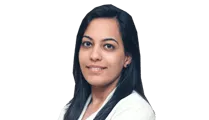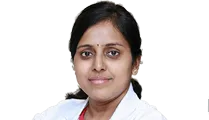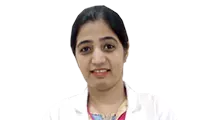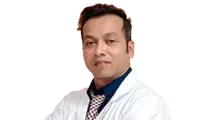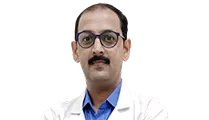FAQs
Know everything here because we have sorted it all for you.
Ask us anything
Most Common Questions
Your doctor will explain the best time to start the treatment after the initial consultation, examination and blood tests. Your clinician may start your treatment on the 2nd or 3rd day of your period.
A couple can try IVF as many times as they want while keeping the treatment cost in mind.
As long as you are in close contact with the clinician, having your tests done at a clinic near you, is feasible. Expert doctors from Indira IVF work in many cities & 165+ IVF centres across India so that patients in far rural areas can also access the best fertility care with ease.
IVF is very safe and not that painful because the injections used for IVF are purified and injected in subcutaneous form. The egg collection process is done under light sedation which is also not painful. At the time of embryo transfer, anaesthesia is not given because it is a 2 to 5-minute process which hardly causes any pain. If done under expert care, IVF can turn out to be a very safe and easy procedure.
Every patient is different; therefore, the process will differ from patient to patient. However, when it comes to IVF injections, they are thin and easy and do not require intervention. They can also be administered under anaesthesia if required. The egg collection process is done under light sedation which is also not painful. At the time of embryo transfer, anaesthesia is not given because it is a 2 to 5-minute process that hardly causes any pain.
The procedure is not painful as it is done under light sedation. But, at times it may cause mild discomfort. At our clinic, we use mild anaesthesia administered through an IV route which relieves discomfort.
Success rates strongly depend on the age of the patient, their condition, medical history and the line of treatment administered.
The IVF procedure can be prescribed in cases where the other fertility treatments have failed, or if the chances of a successful pregnancy are higher with this method than with any other treatment.
If there are no contraindications, the procedure can be carried out simply at the request of the couple by considering that precise time as the right time for IVF.
- Tubal-peritoneal factor -
Violation of the patency of the fallopian tubes leads to the fact that the egg cannot penetrate the uterine cavity. In this case, you can either try to restore patency using a surgical laparoscopic operation or perform IVF and implant an already developing embryo into the uterine cavity.
- Male factor -
This diagnosis is made when the quality of sperm is not high enough. If the number of healthy active sperm is too low to conceive a healthy child, it is better to resort to ART treatments like IVF, IUI, ICSI, etc.
- Endometriosis -
Mild forms of endometriosis usually respond to surgery and hormonal treatment. If, after the therapy, pregnancy does not occur, then the doctor sends the couple for an IVF procedure.
- Age-related infertility -
Age plays a vital role when we talk about deciding the right time for IVF. With this factor of infertility, it is better to supplement the standard IVF procedure with ICSI and assisted hatching methods.
- Anovulation -
Anovulation is usually treated with simpler methods, such as hormonal stimulation combined with IUI. But if it’s unsuccessful, you can always use the IVF method.
- Unexplained infertility -
If it is not possible to establish an accurate diagnosis, and the therapy is unsuccessful, then the doctor may advise the couple to resort to the IVF procedure.
In this process, the female egg is taken out under anaesthesia and fertilized with the husband’s sperm in the lab. The embryo formed after 3-5 days is transferred back to the uterus.
May involve 2-3 visits:
- One day for check-up / Pre-IVF preparation
- 15 days for IVF procedure (Second Visit)
- Embryo transfer
Post Treatment Questions
Resting 15-20 minutes after the transfer is usually sufficient. We suggest not doing heavy exercise and walking long distances during this period. Women who work at an office can work the next day and resume daily activities.
IVF is planned for the second time only after a thorough diagnosis and analysis of possible causes of failure. On an average, a woman is given 3 months for rehabilitation as an IVF cycle gap. During this time, the reproductive system is restored and prepares to receive a new fertilized egg. If after the first IVF, there was a frozen pregnancy, then in this case the rest period lasts about 6 months. In such a situation, there is always chronic endometritis, which needs careful treatment before planning a new pregnancy.
For the second attempt to be successful, sometimes it is enough to make some adjustments to the previous IVF protocol by adding a proper IVF cycle gap. In some cases, a long stimulation cycle is replaced with a short one or one hormonal preparation is changed for another, while in others, the dosage is changed.
If no specific complications were identified, and the first IVF attempt was carried out in a natural cycle, that is, hormonal stimulation was not used, then the artificial insemination procedure can be carried out after 2 weeks. This means that in the next menstrual cycle, doctors begin to monitor the dominant follicle and, when favourable conditions are achieved, they perform a puncture and egg collection.
Yes, walking and light aerobic exercises are okay but avoid lifting heavy weights and any strenuous exercises.
▪ Bed rest is not required after embryo transfer; avoid lifting heavy weights and any strenuous exercises.
▪ Take a healthy diet inclusive of antioxidants and avoid outside food.
▪ Avoid using public washrooms and maintain proper hydration to avoid urinary tract infection.
▪ Avoid stress and negative thoughts.
▪ Take medications prescribed after embryo transfer properly.
Even though an embryo is formed artificially in an IVF pregnancy, there is no difference from what happens in the natural cycle. The uterus accepts the embryo in the same way it accepts the naturally fertilised eggs.
It is important to understand that nature has a foolproof plan in everything including the reproductive system where the embryo attaches to the uterine lining very firmly regardless of whether it attaches naturally or artificially. Movements like walking around or even gravity, do not cause the embryo to detach and fall off.
Also, it is a total myth that bed rest after embryo transfer increases the success rate of IVF. Research has shown that patients who take complete bed rest after embryo transfer have less success in IVF as compared to patients who continue to do their routine activities. The main reason behind this is that patients who keep themselves engaged in some activities have lower stress levels which helps in increasing their IVF success. Therefore, the advice of bed rest after embryo transfer is exaggerated or unrealistic.
Questions on Treatment Cost
At Indira IVF, the cost of IVF/ICSI treatment starts from ₹1,00,000* per cycle. It is advisable to consult with our fertility specialist for customized treatment plan.
*IVF process, Injections, Egg Pickup, Embryo Transfer cost included. Cost of treatment depends on your test reports, type of treatment required, hormonal conditions etc. and may vary from couple to couple.
This method requires highly qualified personnel, a world-class laboratory and the latest technology in equipment. The equipment and materials used in an IVF lab are all imported and expensive. In addition, most of the materials used are disposable and in single-use format.
The cost of the IUI Program at Indira IVF starts from ₹5,000*.
*Cost of treatment depends on your test reports, type of treatment required, hormonal conditions etc. and may vary from couple to couple.
Other Common Questions
IVF process is a series of procedures. It includes-
1. Initial Consultation
Your first step should be meeting up with an IVF specialist. Once all the information has been discussed, the specialist will recommend the best way to proceed.
2. Testing and Ovary Stimulation
The stimulation process will start on the first day of your cycle. Unlike normal, you will be given medications for 8-14 days to encourage the follicles in your ovaries to produce more eggs.
3. Egg retrieval
This procedure takes about 20-30 minutes while you are asleep. Your specialist will use the latest ultrasound technology to guide a needle into each ovary. The average number of eggs collected is 8-15.
4. Sperm Retrieval
Sperm retrieval is done on the same day as that of egg retrieval if you are a couple planning to use fresh sperm in an IVF treatment procedure. In case of frozen or donor eggs, the specialists will keep them ready in the lab.
5. Fertilization
The scientists will now use powerful microscopes to find the eggs from the fluid so they can be taken out of it. Then both eggs and sperm are fertilized in a dish in vitro.
6. Embryo Development
Fertilization of the egg and the sperm results into a zygote which further develops into an embryo. Then the embryo is placed in a special incubator.
7. Embryo Transfer
Here, the scientist prepares the embryo by placing it in a catheter (small tube). Then, he will place the catheter through the cervix into your uterus.
8. Final Pregnancy Test
Two weeks post your embryo transfer; your specialist will conduct a blood test to measure your hCG hormone level. When hCG is detected in your bloodstream, it is a positive sign of pregnancy.
Intrauterine Insemination or IUI is one of the common techniques of ART (Assisted Reproductive Technology). It allows putting sperm directly into the female’s uterus. In this process, the processed (washed) sperm are used. The usage of this technique results in increasing the possibilities of conception.
Intracytoplasmic sperm injection (ICSI) is a conventional IVF procedure where fertilization of the egg is achieved through a different approach. Generally, fertilization occurs when a sperm attaches itself to the egg and penetrates through the outer layer. For some reason, the sperm may fail to penetrate the egg. In such a condition, ICSI can be done along with IVF to achieve pregnancy. During ICSI, a single sperm is picked and injected directly into the egg.
ICSI is performed by an experienced embryologist using specialized instruments. Though ICSI is a precise procedure for fertilization to occur, required cellular events need to take place.
Low sperm count is also known as Oligospermia. One may undergo ICSI (Intracytoplasmic Sperm Injection) where a single sperm is injected into a matured egg. Adapting this treatment helps to elevate the chances of conceiving. Besides this, ICSI is useful, especially in cases of male infertility, low sperm motility and poor sperm morphology.
There are procedures like TESA/TESE for men who do not have sperm in their semen. These include collecting tissue samples directly from the testes in different ways depending on the condition. If sperm is found in these tissue samples, then ICSI can be used to inseminate the eggs.
The time duration of this procedure completely depends upon the number of follicles that are required to be aspirated. Normally, it takes about 5-10 minutes.
The cryopreservation procedure allows the freezing of eggs, sperm, or embryos for future use. Generally, in IVF, three types of cryopreservation techniques are followed.
(i) Oocyte cryopreservation or Egg Freezing-
Oocyte cryopreservation allows you to use frozen eggs at any desired time later in the future. When you feel ready for pregnancy, you can use these preserved eggs to ensure a healthier pregnancy. This reduces your concerns about chromosomal abnormalities, which otherwise increase with age, especially when you are 35 or older. Frozen oocytes can be thawed and then combined with sperm in the clinical lab.
(ii) Sperm Cryopreservation-
It is a process of storing sperms for future use. It helps men to preserve their fertility who are about to have a treatment that can cause fertility issues such as cancer therapy, or prostate or testicular surgery. You can also opt for sperm freezing if you are at risk of exposure to chemicals or radiation. This procedure is also used in sperm banking.
(iii) Embryo Cryopreservation-
In IVF, embryo cryopreservation is an excellent option for preserving fertility for future use. Many times the extra embryos from an IVF cycle are kept frozen for future use. Embryo cryopreservation provides you with another chance to get pregnant if IVF fails the first time. You will not have to go through the whole IVF procedure again.
Fertility Team
All tests and treatments are performed by our experts. You can request for an appointment with any of our experts.




